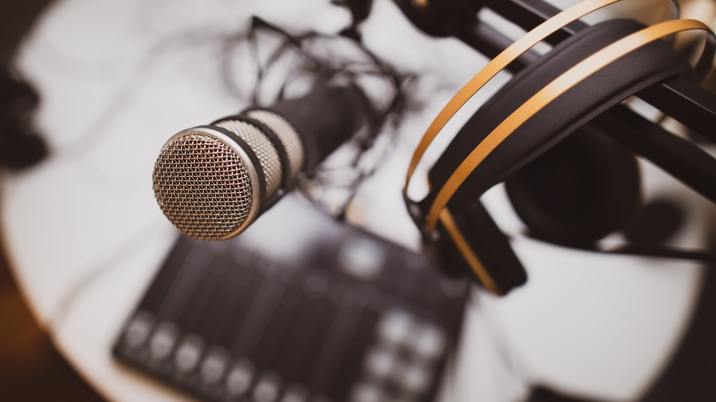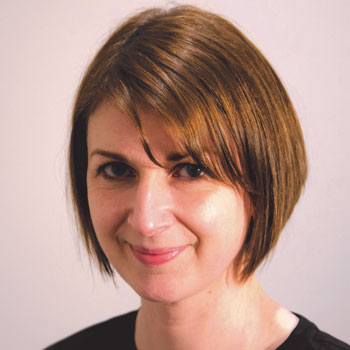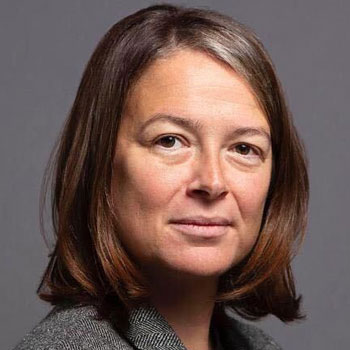
A British newspaper invented podcasting. Not the medium, but the word. When Guardian columnist Ben Hammersley needed to up his word count for a 2004 article on the internet audio boom, he padded it out by musing, “What to call it? Audioblogging? Podcasting? GuerillaMedia?”.
And while listener demand for this novel format stayed roughly constant over the following ten years, it became a more interesting medium for publishers to invest in following a listener spike in 2014, likely caused by the release of the hit US podcast series, Serial, and by Apple’s decision to include a native podcast app on iPhones. Those who had invested in audio ahead of podcasting’s “second wave” (among them, The Guardian) later reaped the benefits of already being in the space.

Now, all major UK publishers have played catch-up, with offerings from bitesize daily news updates, to chatty round-table discussions, to documentary series unfolding a story over a number of episodes. But content is largely distributed for free, so what opportunities does podcasting afford publishers today?
One of the frequent answers from those heading up podcast teams at publishers is that audio allows them to access a new audience. For The Economist’s director of podcasts, John Prideaux, part of the attraction is just that: “We see podcasts as a way of reaching a large number of people who may never have read a story from The Economist and showing them what we are about.”
Chris Stone, who oversees video and audio at The New Statesman agrees: “Podcasts are a fantastic opportunity to introduce new people to our community”. He notes too that, “the informality and intimacy of the format means they can get to know the journalists behind our content.”
Who’s listening?
But the uncomfortable truth is, we don’t necessarily know if podcasting is accessing a new audience. That’s because the audience demographic data is poor. Podcast apps aren’t keen to tell publishers exactly who is listening and given most publishers’ listens take place off-platform, we simply cannot ascertain whether a listener is already a subscriber to the print offering. Any evidence is purely anecdotal. But what we do know is that podcasts can be an excellent way of targeting a younger audience. “Slow news” publisher Tortoise has an average membership age of 39, while its average podcast listener is a whole ten years younger. We saw this trend too at The Telegraph, where I was head of audio until June this year.
Many of the journalists who pitched me podcast ideas also felt frustrated that their work was routinely limited to articles of under 800 words. They felt many of their sources’ stories deserved more time. And in a media landscape that has adapted to readers’ demand for shorter-form articles and videos, podcasts provide a welcome opportunity to explore topics without a word limit.
“We also see podcasts as a way to go deeper into particular subjects,” Prideaux tells me, explaining why The Economist has invested in the medium.
And his slate is proving popular: The Economist’s podcasts reach around 4.5 million unique listeners monthly. Good shows with regular output become part of a listener’s weekly routine. Listeners “meet” with the host(s) week in, week out. Both John Prideaux and Chris Stone tell me they value the opportunity to make a listener feel like they’re part of a club: “Being an Economist reader has always been a bit like being a member of a stimulating and slightly nerdy secret society. A good podcast has the same feel,” Prideaux explains.
Clubbable
Publishers able to harness that feeling of being part of a club will find an audience that is, in my experience, uniquely engaged. Telegraph listeners frequently asked us to produce merchandise for their favourite podcasts, so they could proudly display their “membership”.

Esther Newman, editor of monthly magazine Women’s Running, says it’s their weekly podcast that has built the brand’s most active audience: “We initially thought that it would be a marketing tool to drive memberships to the print subscription, but it hasn't worked out that way,” she tells me. “What we've ended up creating is a brand new, disparate channel, with a massively engaged audience – much more engaged than the audiences across our other channels – as we have them in that very personal podcast relationship for an hour a week.” Women’s Running now monetises that engagement through rewarding paying Patreon members with exclusive Zoom Q&A sessions with the podcast’s hosts.
Newman wasn’t alone in initially seeing podcasts as a subscription tool. This is also one of the aims of my old department at The Telegraph and of Chris Stone’s at the New Statesman. With largely paywalled websites, podcasts can be an excellent shop window into a publisher’s written offering and an introduction to the voices you can read if you pay. But it’s difficult. Unless the listener uses the exact trackable URL plugged in the podcast, their onward journey is impossible to follow. That’s why publishers often give listeners exclusive subscription deals only accessible through a specific link.
Stone recently told the inaugural Publisher Podcast Summit that the New Statesman gets “a handful of subscribers every week from our podcasts”. In reality, those podcasts could represent the final push to pay for more than just that handful of people, but if they don’t use the trackable link, he simply wouldn’t know.

I used to think anyone who purported to have perfected turning non-paying listeners into paid print subscribers was lying, but London-based start-up Tortoise might have proved me wrong. Eighteen months into their three-year journey, they pivoted to become an “audio-first” newsroom. Their primary monetisation strategy is now to turn podcast listeners into paid members, with access to events, online journalism, exclusive newsletters and early, ad-free access to their audio. And it seems to be working: while Tortoise as a whole is yet to turn a profit, the company’s audio team was profitable within twelve months. “It’s our single biggest member acquisition funnel,” confirmed Tortoise co-founder Katie Vanneck-Smith at the Publisher Podcast Summit. Investing in enough experienced reporters and producers can truly pay for itself.
Advertising & syndication
Whether or not publishers use audio to sell subscriptions, most also sell podcast ad space. Not only does this help fund their audio, but it can also provide listeners with an incentive to pay the podcast or publisher, who can offer ad-free audio as part of their subscription offering. And despite a difficult time for ad sales, in Q1 2022, digital audio revenue increased by 500% compared to the same quarter in 2021, and in Q2 it rose again.
But monetisation can be difficult. The shows easiest to sponsor are often safe, celebrity-fronted podcasts. Documentaries on contentious or depressing topics can be harder. The Economist’s John Prideaux tells me they were recently able to produce their first narrative podcast, The Prince, an eight-part series on the rise of China’s Xi Jinping, “because The Economist has a robust business model, mostly funded by subscriptions.”
In other words, ambitious, resource-heavy audio like this rarely pays for itself via advertising, despite seeing less competition from independent podcasters. But it was exactly this kind of show that saw The Telegraph cut through the competition when I was head of audio. Our narrative series, Bed of Lies, was by far our most listened-to show per episode and has won a British Journalism Award, Press Award and two Publisher Podcast Awards, but we never managed to sell an episode.
While Apple Podcasts and Spotify now support paid subscriptions to their apps, meaning listeners can pay upwards of £1.99/month for perks including access to the back catalogue, bonus content and ad-free episodes, publishers driven by subscriptions have largely been reticent to engage with this, as it means asking their listeners and readers to pay in two separate places, rather than having one streamlined subscription directly to the publisher. Acast is currently beta-testing technology that could solve this issue.
But there is another reason why publishers are increasingly distributing higher-budget narrative series that may not be so popular with advertisers, for free. If the publisher has a savvy syndication team, shows such as The Economist’s The Prince, the creation of which John Prideaux tells me “was more about journalism than about business strategy”, could end up ticking both boxes.

By the time I left The Telegraph, we would get several emails a month asking about the rights to our narrative shows. It not a totally novel concept: among several examples, the TV rights to ABC’s The Dropout podcast on the Theranos scandal were bought by Apple TV.
Tortoise once again stands out in this space. Recently, they confirmed an exclusive multi-year first look deal with Sky Studios to adapt their original podcasts into scripted TV documentary series. Their smash-hit podcast, Sweet Bobby, has also been bought by an unconfirmed major global streaming platform. Journalists who have already built a relationship with the interviewees are an asset to TV companies looking to tell the same story and can be brought on as consultants.
Publishers investing in narrative audio are at an advantage in building an audience if they have a general weekly or daily show. The Times can drop the first episode of a new documentary series into their daily Stories of Our Times feed; Tortoise their weekly Slow Newscast feed. But promotional tools aside, you still need a gripping story with standout protagonists willing to talk to you, tight scripting, an engaging narrator and immersive sound design in order to create a narrative show with enough buzz to make it onto the radar of TV commissioners. Content is, and always will be, king.
This article was first published in InPublishing magazine. If you would like to be added to the free mailing list to receive the magazine, please register here.










